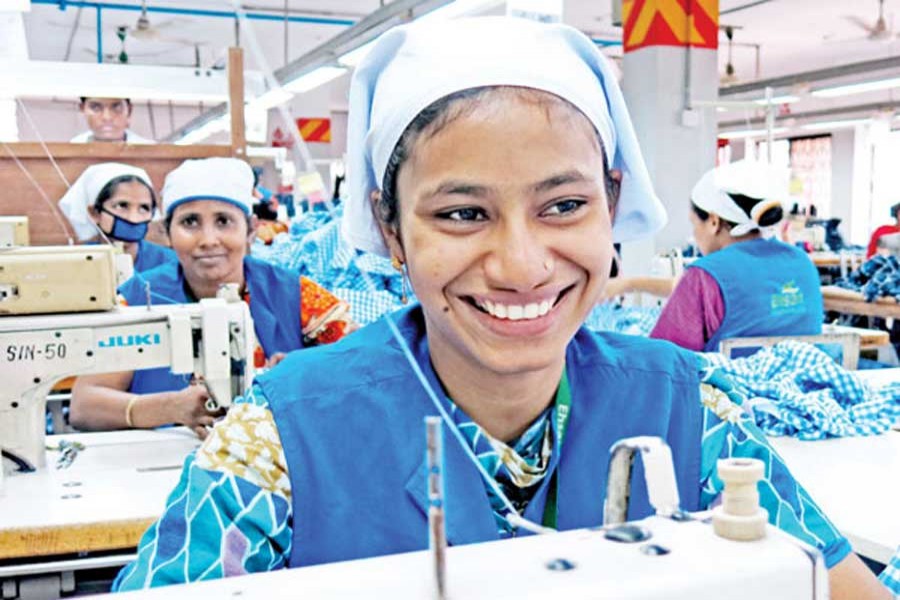The Bangladesh Garment Manufactures and exporters Association (BGMEA) has sought government's intervention in setting capacity benchmark for export oriented garment factories in the country. In the wake of unplanned capacity expansion of many factories, the apparel apex body has urged the government to set a capacity development benchmark to rein in unplanned expansion of the industry that has resulted in the concentration on a few items of export.
The BGMEA's move came after it had identified unplanned capacity enhancement of the industry in respect of a few products as one of the major reasons for local exporters' poor price negotiating capacity and unhealthy competition among themselves. The proposal of the BGMEA also intends to monitor investment and capacity of the industry in terms of product categories as only five items -- t-shirt, shirt, trouser, jacket and sweater --accounted for 73 per cent or US$ 24.91 billion of the total US$ 34.13 billion RMG export earnings in the last fiscal. Besides, about 74.14 per cent of the country's total RMG items exported last fiscal were made of cotton, reflecting overwhelming reliance on the basic raw materials and less efforts to grab demands for value-added items using manmade or artificial fibre.
The crux of the problem lies in the unscientific, almost irrational manner in which factories upscaled their capacity disregarding some of the basics pertaining to production management and the discipline critically required for the purpose. Curiously, most factories were driven by the motive of procuring as much export orders as possible, that too for the few aforementioned apparel items as buyers usually place orders for these in big volumes. In fact, this practice had begun decades ago when during the MFA (multi-fibre arrangement) quota regime, Bangladesh as a new entrant in apparel trade thrived quickly by exporting some of the low-end apparel products, particularly to the EU market. Factories enhanced their capacities at their sweet will, often procuring orders that they could not manage to ship on time. Subcontracting sizeable portion of the orders to smaller factories did help, but not always in avoiding cancellation of orders due mostly to delay. Another reason also responsible for unreasonable capacity expansion was that most factories preferred to specialise in some of the few aforementioned categories of clothing.
From the BGMEA's move it is clear that the practice is still on-much to the disadvantage of the industry. As a result, Bangladeshi apparels are failing to fetch the right price. Obviously, excessive capacity in a few common and low-end product-range causes undue competition among local manufacturers making it conversely convenient for buyers not to offer fair price. According to the BGMEA, the average price of garment items has declined by 1.61 per cent in last four years. Over and above, excessive concentration on few items renders the industry less diversified with poor value addition. Given the situation, the BGMEA's proposal regarding capacity benchmark, if implemented, will put a cap on unplanned capacity expansion of the factories, and also provide authentic data that could be used to evaluate strengths and weaknesses of the industry.


